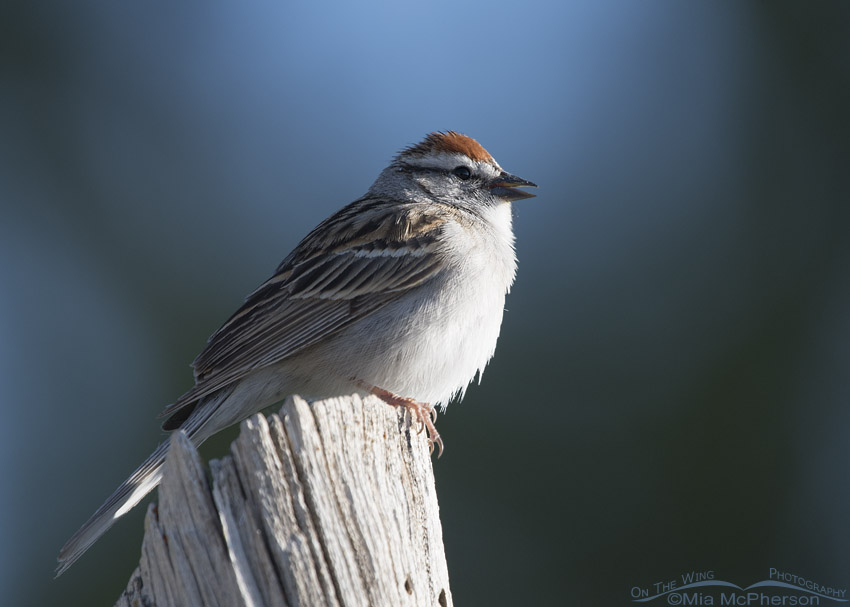 Chipping Sparrow singing in the West Desert – Nikon D500, f7.1, 1/640, ISO 320, Nikkor 500mm VR with 1.4x TC, natural light
Chipping Sparrow singing in the West Desert – Nikon D500, f7.1, 1/640, ISO 320, Nikkor 500mm VR with 1.4x TC, natural light
Yesterday morning I couldn’t stand the thought of heading to Antelope Island State Park or going up to northern Utah because of the no-see-ums (biting gnats) that are so bad right now. I had been chewed up the on the 9th while in northern Utah and have lumps where the bites are to prove it so instead I drove out to the West Desert and explored some of the canyons in the Stansbury Mountains. I’m glad I went but the views going to some of the canyons have changed, drastically.
I couldn’t resist photographing this tiny Chipping Sparrow singing while perched on a “cedar” fence post with the sky and dark juniper behind it. The lighting isn’t the best but I adore that blue and green background.
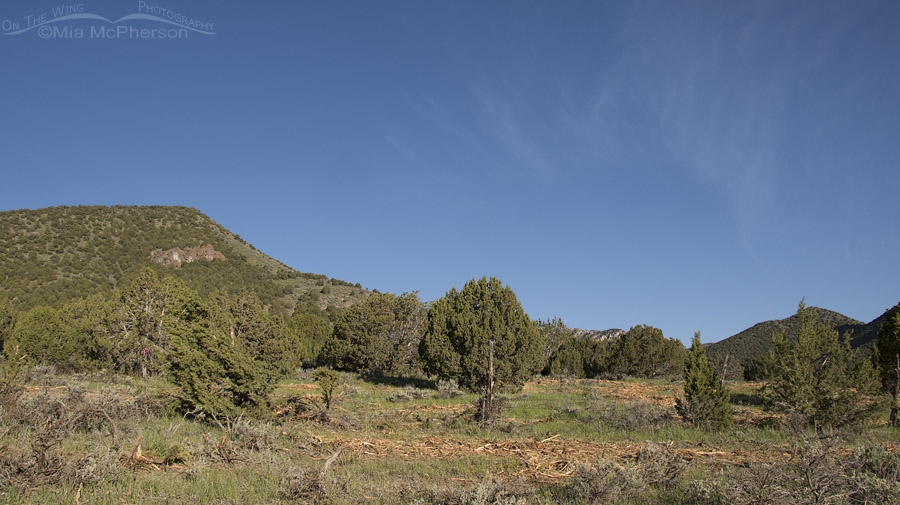 Chopped down junipers in the Stansbury Mountains – Nikon D810, f7.1, 1/1250, ISO 320, Nikkor 18-200mm VR at 18mm, natural light
Chopped down junipers in the Stansbury Mountains – Nikon D810, f7.1, 1/1250, ISO 320, Nikkor 18-200mm VR at 18mm, natural light
The dirt road heading up to the canyons currently is in pretty bad condition in some areas with plenty of deep ruts and sharp, exposed rocks.
You may have noticed that I wrote cedar fence post above using quotes and that is because people here call our Utah Junipers “cedars” even though they are junipers. Junipers make strong fence posts that can last a hundred years or more.
But junipers have become a problem since the arrival of the first pioneers to the west because their historical range has expanded into the sagebrush-grass communities below the juniper-pinyon communities that are typically higher in elevation. We humans do alter natural habitats and that isn’t always for the good.
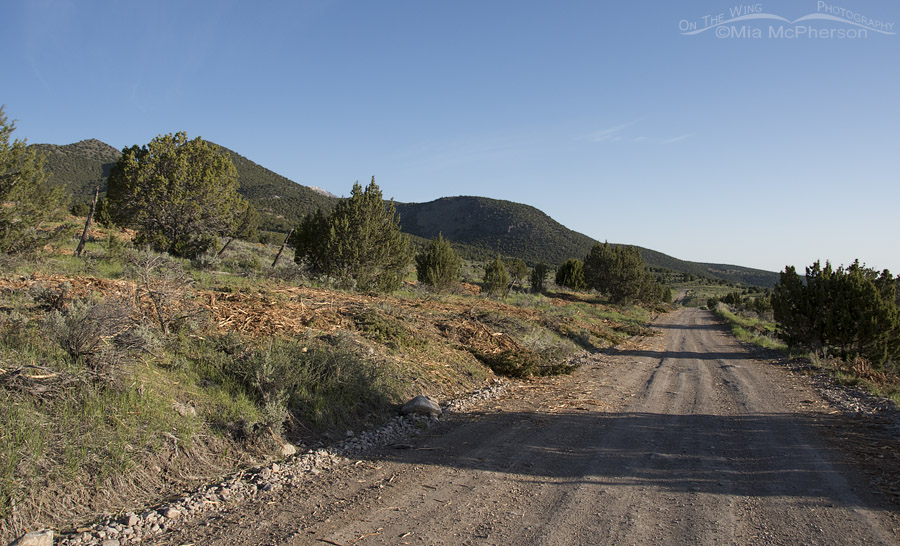 Destroyed junipers – Nikon D810, f7.1, 1/800, ISO 320, Nikkor 18-200mm VR at 18mm, natural light
Destroyed junipers – Nikon D810, f7.1, 1/800, ISO 320, Nikkor 18-200mm VR at 18mm, natural light
I noticed several areas yesterday on my way up to the canyons where junipers have been cut down and chopped up and at first I was sickened by the sight, mostly because I know that birds are nesting right now and in my mind these junipers should have been chopped down during the late fall or during the winter when the birds aren’t nesting. I’d been up in these canyons in March and the junipers were standing then.
You can see not all of the junipers were chopped down. I am not certain at this point in time if the areas where the junipers were removed is on private or federal lands.
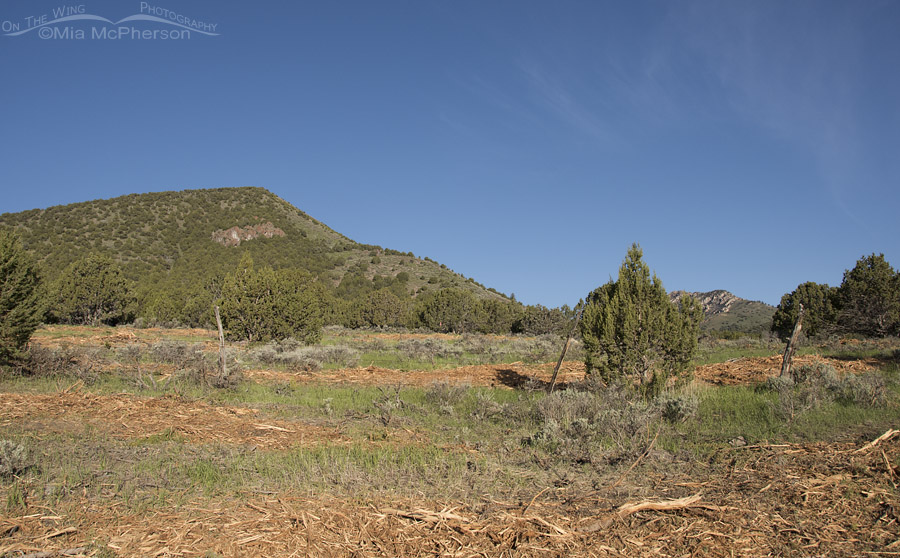 Junipers laid to waste – Nikon D810, f7.1, 1/1000, ISO 320, Nikkor 18-200mm VR at 18mm, natural light
Junipers laid to waste – Nikon D810, f7.1, 1/1000, ISO 320, Nikkor 18-200mm VR at 18mm, natural light
Junipers can crowd out herbaceous and shrub species. Fire suppression, overgrazing and climate change have been identified as potential causes for the expansion of junipers in Utah and other locations in the western U.S..
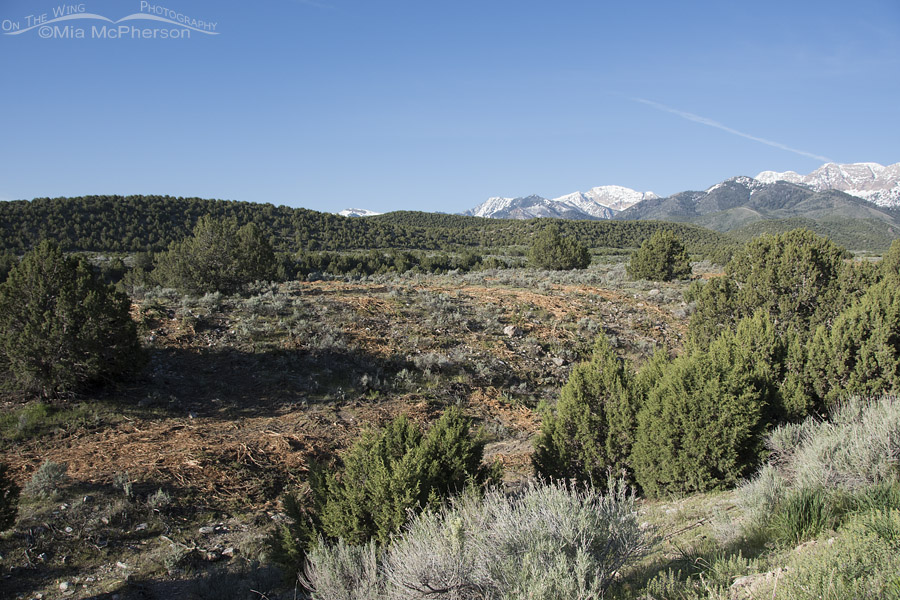 Another swatch of destroyed junipers – Nikon D810, f7.1, 1/800, ISO 320, Nikkor 18-200mm VR at 18mm, natural light
Another swatch of destroyed junipers – Nikon D810, f7.1, 1/800, ISO 320, Nikkor 18-200mm VR at 18mm, natural light
So while the views I saw of the destroyed junipers yesterday were a shock to me this may be a change for the better or at least a step in the direction of what this landscape was and looked like before the European settlers came to Utah.
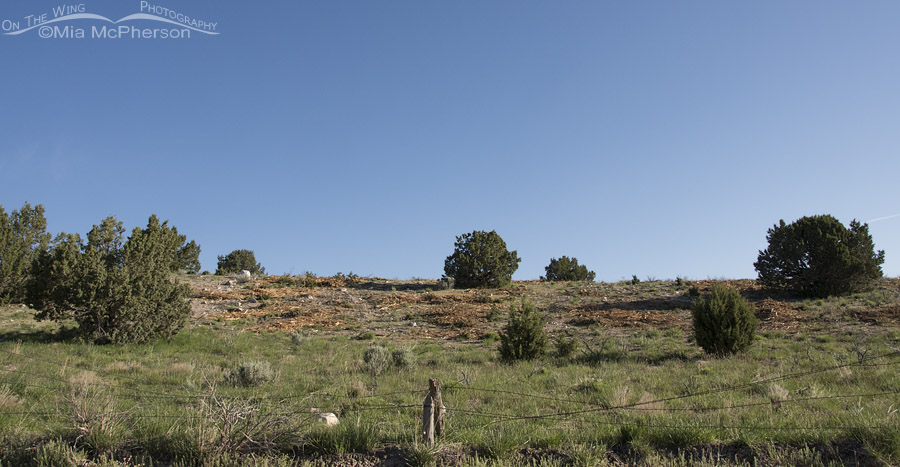 Hillside stripped of more than 50% of its junipers – Nikon D810, f11, 1/500, ISO 320, Nikkor 18-200mm VR at 18mm, natural light
Hillside stripped of more than 50% of its junipers – Nikon D810, f11, 1/500, ISO 320, Nikkor 18-200mm VR at 18mm, natural light
One hillside appeared to have 50% fewer junipers on it. Over the years I have seen hawks perched on some of the junipers that were chopped down so it was a bit of a punch in the gut for me but they still have some to perch on.
I don’t know if the removal of the junipers was done to increase grazing land or if it was done to keep the junipers in check but the views I was used to seeing have changed.
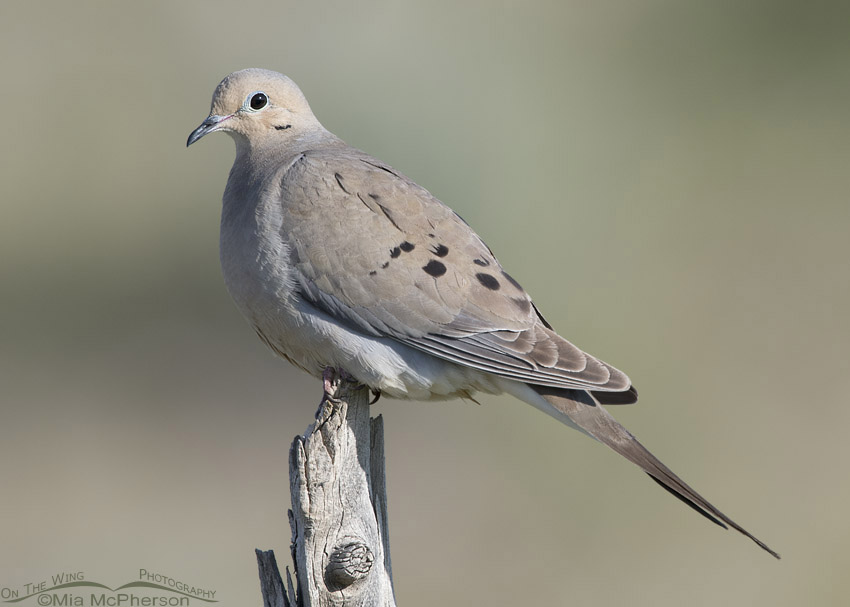 West Desert Mourning Dove – Nikon D500, f7.1, 1/800, ISO 320, Nikkor 500mm VR with 1.4x TC, natural light
West Desert Mourning Dove – Nikon D500, f7.1, 1/800, ISO 320, Nikkor 500mm VR with 1.4x TC, natural light
Who knows, maybe more birds might show up in those areas. I’ll have to wait to see but hopefully the grasses and shrubs will grow and cover the areas where the junipers have been removed. It will be interesting to see what eventually happens to these areas.
I was able to photograph this Mourning Dove yesterday as it sat on top of an old “cedar” fence post next to the road. And I didn’t get bitten by a single insect yesterday.
Life is good. Even when things change.
Mia
Click here to see more of my Chipping Sparrow photos plus facts and information about this species. Click here to view more of my Mourning Dove photos plus facts and information about this species.
More information on the Mechanical Mastication of Utah Juniper Encroaching Sagebrush Steppe Increases Inorganic Soil (The title of the article appears to be truncated on this page)


Chaining to provide grazing for cattle.
Thanks for sharing this interesting story. The tug of war between native vs invasive plant and animal communities has become increasingly contentious primarily because those terms require a personal preference for a specific historical context.
Because I am usually so impressed by your wildlife images, I forget to mention how compelling your landscape shots are. You really do a great job of capturing the feel of the terrain and a sense of openness. Like your other contributors, I also hope there was a good reason for cutting down the junipers. It always bothers me when I see something like that. It seems to me that nature knows how to take care of itself better than we do.
By the way…your chipping sparrow pic is terrific. Thanks Mia.
Any time “man” decides to “fix” things, I cringe…it seems they almost always screw up somehow…I hope this turns out better than usual. I love both of your bird images, lighting, backgrounds and weathered wood perches, too. Two real beauties!!!
Echoing Patty. And our reparations are almost always too little, too late.
On a more positive note, I adore the sparrow. Similar to ours, and different too.
Love the Chipper. We call them cedars in Arkansas too. Read once that during the depression they went in an cut down the “cedars” in Texas and the springs started flowing.
Beautiful capture of the Chipping Sparrow (one of my favorite birds), and very thoughtful post. It’s always difficult to see such drastic changes to the landscapes we love, even if they’re in the name of returning them to more native species. There’s an area close to my home in western MA where they’ve done the same thing–taken out a lot of invasive brush and scrub that was historically very productive for spring migrants. I can’t help but feel for the birds who used to shelter and forage in it, but I also understand the decision to remove it and try to keep some of the more aggressive invasive plants under control. Like you, my hope is that native plantings come back and return some cover and food sources back to the area.